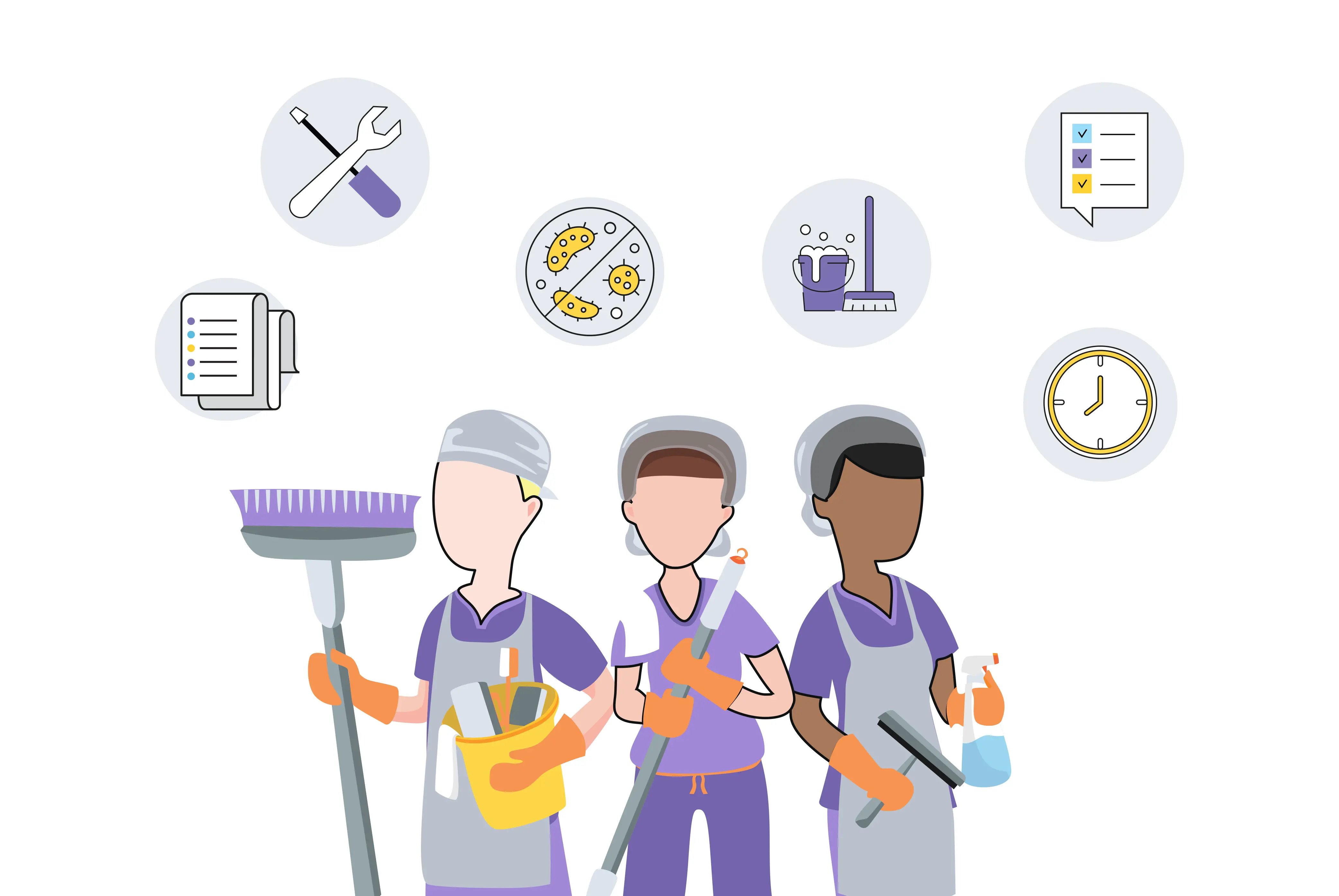1. Tech-Ready Operators: From Manual to IoT Cleaning Systems
The rise of intelligent cleaning devices—like the Tennant T7 robotic scrubber and UV-based disinfection units—requires a new type of operator. Employers now prioritize candidates with certifications in automated equipment handling and basic proficiency in mobile app-based maintenance interfaces. Technical literacy is no longer optional—it's foundational.

2. Scheduling Powered by Predictive Data
Workforce coordination has entered the era of big data. Platforms like Ecolab Synergy use AI to predict facility traffic patterns, optimizing cleaner deployment. Hiring managers increasingly seek team leads skilled in tools like Tableau and SQL to manage these systems and ensure peak efficiency across campuses and office towers.
3. Safety Training Goes High-Tech
Hazardous material handling—especially in hospitals and biotech facilities—demands strict OSHA compliance. Candidates must complete 40-hour HAZWOPER training, and many employers now offer VR-based simulations to prepare staff for emergency scenarios like chemical spills or biohazard exposure.
4. The Bilingual Edge in Urban Markets
Bilingual recruitment is no longer a bonus—it’s essential in cities like Miami, Los Angeles, and Houston. Cleaners fluent in both Spanish and English enhance team communication and client satisfaction. Forward-thinking companies also implement cultural sensitivity programs to improve service quality in schools and public institutions.
5. Retention Strategies for Overnight Crews
Night shifts remain difficult to staff—but innovative retention programs are helping. Some employers now offer BCSP-endorsed certifications in fatigue risk management and circadian wellness. Coupled with premium pay scales, these programs improve morale and long-term retention for 24/7 facility contracts like hospitals and data centers.
6. Veteran Hiring Pathways
Veterans bring logistics and discipline to the cleaning workforce. Employers are increasingly partnering with VA-approved apprenticeship programs to translate military experience into civilian leadership roles in sanitation, particularly in healthcare and government buildings.
Conclusion
Today’s cleaning workforce must do more than sweep and sanitize—they must interpret data, manage digital tools, and navigate diverse environments. Recruitment strategies in 2025 are evolving to meet these demands, creating a smarter, more agile generation of cleaning professionals.
